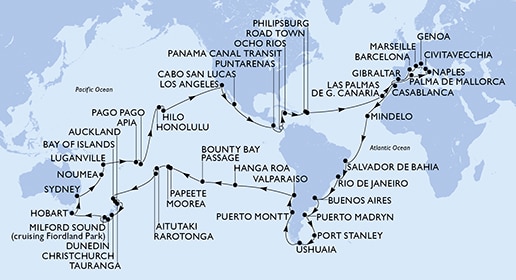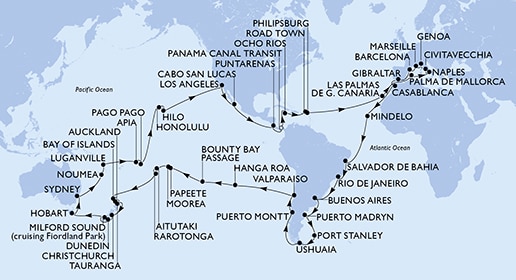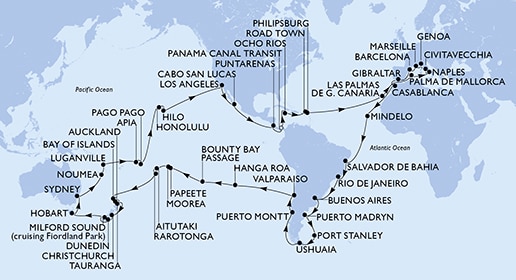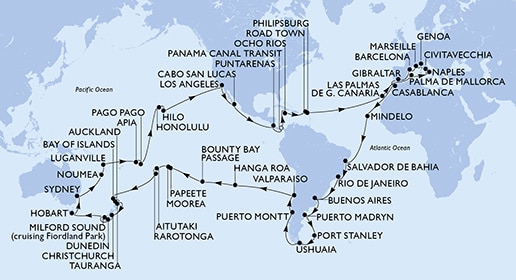
Port Bounty Bay Passage
The Bounty Bay Passage in Pitcairn is an essential point of interest for cruise ships. It holds historical significance as it was here that the infamous HMS Bounty crew, led by Fletcher Christian, sought refuge after mutinying against Captain William Bligh. This history makes it a popular tourist destination, attracting a large number of cruise ships every year.
Cruise ships in the Bounty Bay Passage engage in a variety of activities. These include on-board lectures about Pitcairn's history, shore excursions to see the island's unique flora and fauna, and cultural interactions with the island's inhabitants. In addition, the clear waters of the Bounty Bay Passage offer opportunities for snorkeling and diving, providing visitors with an unforgettable experience in this remote part of the world.
History
The Bounty Bay Passage port in Pitcairn holds a significant historical background. It was named after the infamous HMS Bounty, a British vessel whose crew mutinied in 1789. The mutineers, led by Fletcher Christian, sought refuge on the isolated Pitcairn Island, where they scuttled the Bounty in the bay that now bears its name.
Despite its captivating history, the Bounty Bay Passage is not an ideal harbor. It is small and surrounded by jagged cliffs, making it difficult for ships to dock. Over the years, the Pitcairn Islanders have developed exceptional boating skills to navigate in and out of this challenging harbor. The Bounty Bay Passage remains a symbol of the island’s unique history and resilience of its inhabitants.






